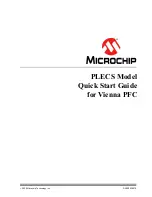
XLINK 500/100 Operations & Maintenance Manual page # 148
SHEFFIX Example
:STAGE 0 #2 20.50 20.50 20.50 20.50 :PRECIP 3 #5 12.00 12.01 :TEMP 3 #5 23.5 23.2 :BV 1 #3
14
SHEF Example with Min/Max data included
When transmitting Min/Max data, the formatter includes a timestamp for each value because
the Min/Max data is logged at the time of the occurrence rather than the measurement interval.
Note how in the message below the MX and MN only have one value and the timestamp is
different for each.
:ITEMP 12 #15 25.9018 26.0289 26.0988 26.2451 :MX 64 #60 26.686 :MX 101 #60 27.426 :MN 14
#60 25.891 :MN 131 #60 25.334 :AVG 12 #60 26.169 26.368
15.7.
Sutron Standard CSV
Logs downloaded from the station will be in the Sutron Standard CSV format. It is possible to
transmit data in the CSV format. However, CSV messages are large compared to SHEF and
Pseudobinary.
The format was introduced in 2009 and is common to current Sutron products. The general
format specification for Sutron Standard CSV format is
mm/dd/yyyy,hh:mm:ss,label,data[,units,qual][,label,data[,units,qual]]
15.7.1.
Sutron Standard CSV Example
04/02/2012,09:23:45,STAGE,20.50
04/02/2012,09:23:50,STAGE,20.50
04/02/2012,09:23:53,Setup Change
04/02/2012,09:24:00,BV,14
04/02/2012,09:25:00,PRECIP,34.5
04/02/2012,09:25:00,TEMP,23.5
04/02/2012,09:25:00,STAGE,20.54
15.8.
MIS
MIS
format is a verbose ASCII format that uses tags. Each measurement gets its own section in
MIS.
The header includes the station name and the measurement label. The body includes a
timestamp and a value for each sensor reading.
The example below illustrates the MIS format for one measurement. If more than one
measurement were being transmitted, each measurement would have a section like the one
below.
<STATION>000DOLPHIN</STATION><SENSOR>00PR</SENSOR><DATEFORMAT>YYYY/
MM/DD</DATEFORMAT>
2017/05/24;111500;82.03
2017/05/24;110000;82.04
2017/05/24;104500;83.11
2017/05/24;103000;83.14
In that example
















































